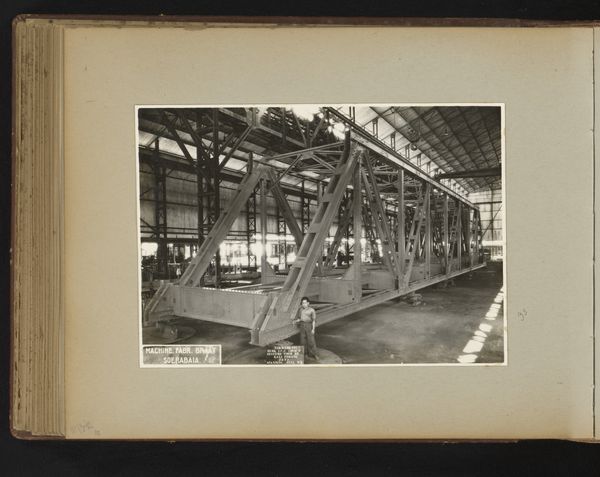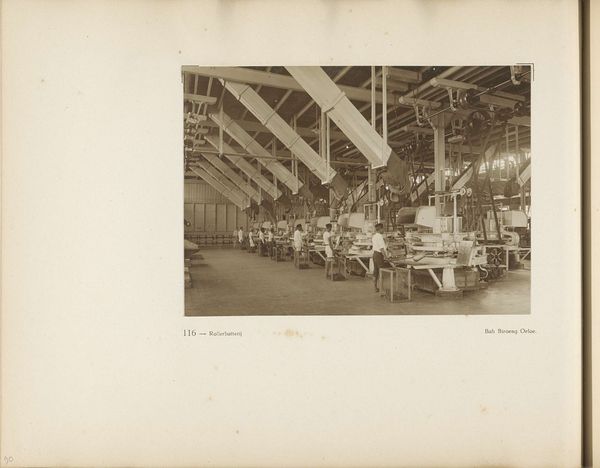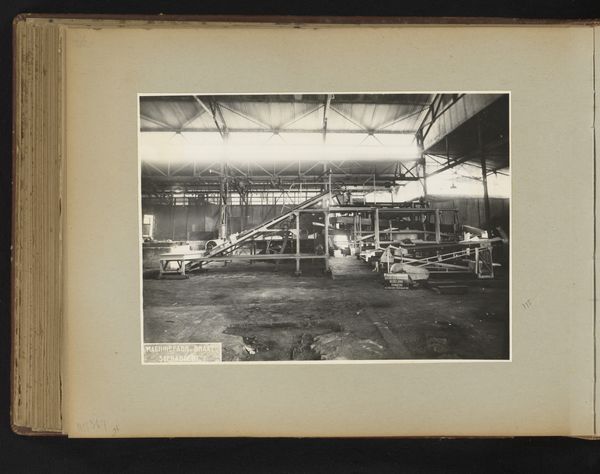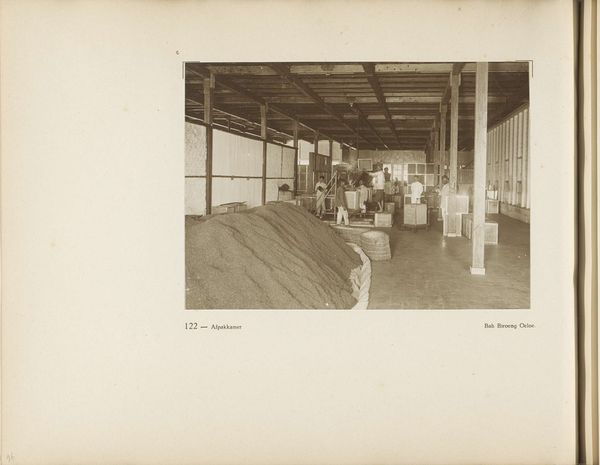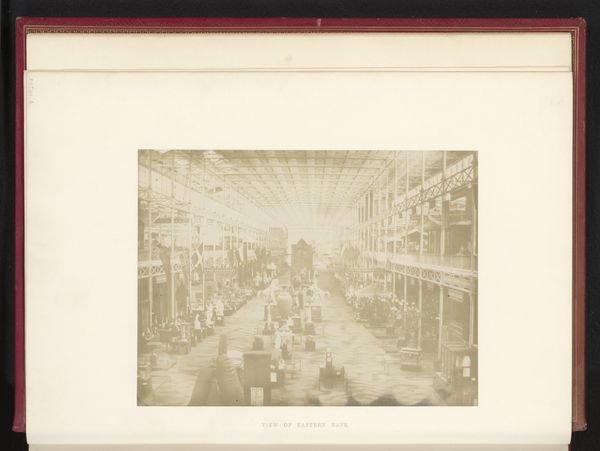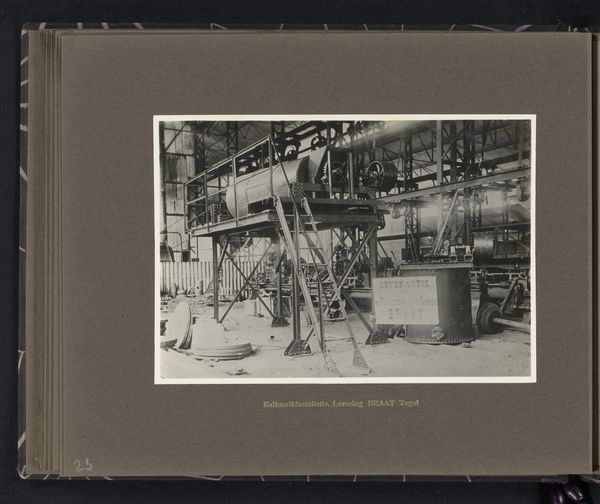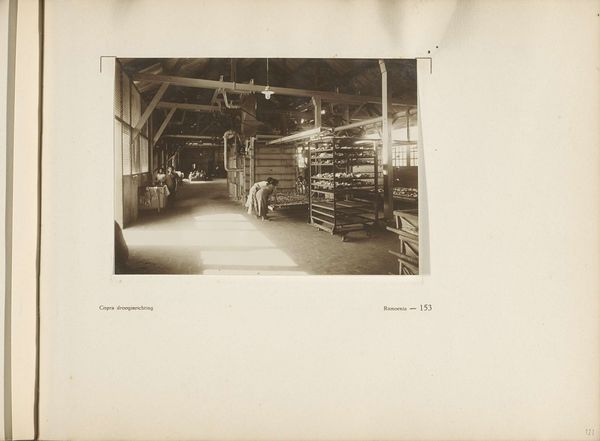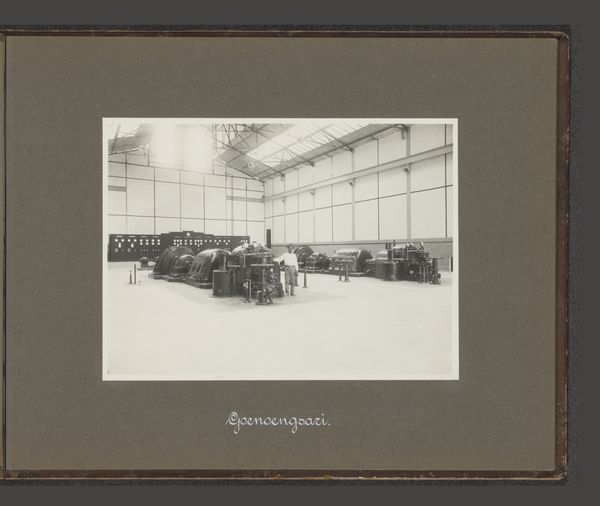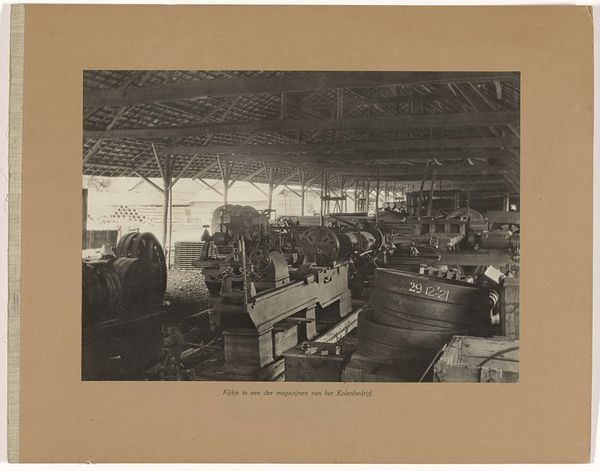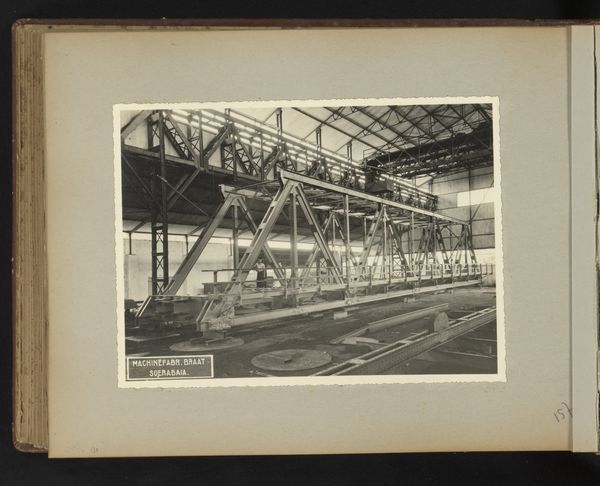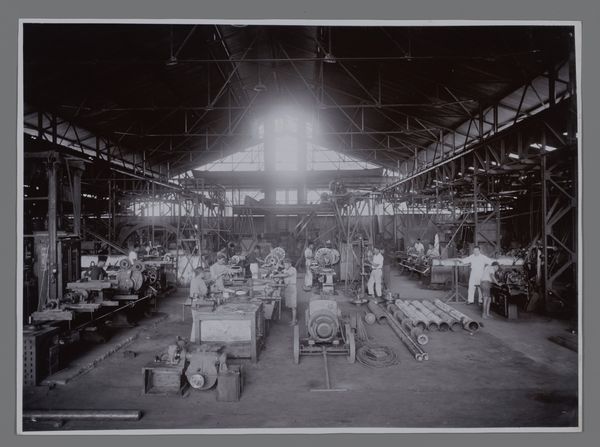
Interieur van de Great Exhibition of the Works of Industry of All Nations in 1851 in het Crystal Palace in Londen met twee sculpturen en daarachter een orgel 1851
0:00
0:00
print, photography, gelatin-silver-print
# print
#
landscape
#
photography
#
gelatin-silver-print
#
cityscape
#
genre-painting
#
realism
Dimensions: height 172 mm, width 226 mm
Copyright: Rijks Museum: Open Domain
Curator: This is a gelatin silver print from 1851 by C.M. Ferrier and F. von Martens, titled "Interior of the Great Exhibition of the Works of Industry of All Nations in 1851 in the Crystal Palace in London." Editor: It possesses an interesting quality, like looking into the past. The tonal range seems compressed, focusing my eye on the overall texture created by the architecture. Curator: Absolutely. The architecture speaks volumes, doesn't it? Consider this not simply as an image, but as a record of industrial ambition and a key representation of Victorian values and their obsession with progress through technology. Editor: The linear perspective dominates, drawing us to an almost ethereal vanishing point. Note how the structure creates repetition, and repetition, the sense of scale. Curator: The scale of the Crystal Palace was revolutionary. It was a temporary structure designed to house manufactured products and industrial advancements from across the globe during the Great Exhibition of 1851, intended as a global display of technological progress in Victorian London. Editor: See the deliberate placement of the sculptures; their placement helps establish an anchor for this vastness while echoing, in miniature, the grandiose designs overhead. There is something beautiful and terrible about its rigid perspective. Curator: Exactly. The exhibition attracted millions of visitors, it signified Britain's global power, industrial innovations, and expanding empire at the center of modernity. This photograph becomes a historical document as much as a work of aesthetic value. Editor: A truly remarkable representation of that era’s confidence. This photograph doesn't merely present reality, it actively shapes perception, magnifying grandeur through skillful framing. I appreciate its visual strength but I struggle with its context in Britain's wider imperial dominance. Curator: This perspective has certainly revealed some nuanced aspects of industrial ambition that linger, I think. Editor: Yes, indeed. The complexities within its stark geometry leave an interesting note to consider regarding context, culture, and creation itself.
Comments
No comments
Be the first to comment and join the conversation on the ultimate creative platform.

